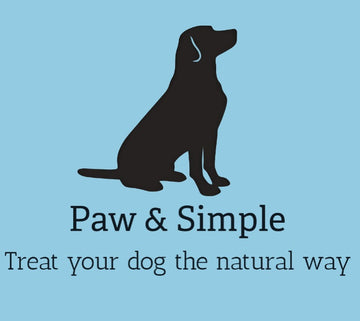Is Rawhide Dangerous For Dogs?
Is Rawhide Dangerous For Dogs?
Is Rawhide Dangerous For Dogs?
You can find rawhide in most generic pet shops and certainly all large supermarkets in the pet section, so that would make you think that it must be a suitable chew for dogs, as otherwise no one would stock it, right?......Well that’s not actually the case!
It’s packaging and looks are very deceiving! It’s always branded as a ‘natural’ chew and comes in lots of appealing shapes and sizes. It’s cheap, odourless, and quite long lasting, so I can understand the appeal, however once you’ve read the rest of this blog, you’ll be sourcing an alternative very quickly!
The common thought is that a rawhide stick is a by-product of the beef industry and is it made of some sort of dehydrated meat. Whereas, rawhide is actually a by-product of the leather Industry, so theoretically it is a leather chew!
Due to this, the chews start out hard, but as your dog chews is it gets softer until it is the consistency of chewing gum. By this point, it is nothing more than a choking and intestinal obstruction hazard, as the ‘leather’ type material cannot be digested by your dog.
SO HOW DO THEY MAKE RAWHIDE CHEWS?
1. The Tannery
Cattle hides are usually shipped direct from slaughterhouses to tanneries for processing. The hides are treated with a chemical bath to help “preserve” the product during transport to help and delay the rate of decaying. (This doesn’t stop the decaying process though, only slows it.)
Once at the tannery, the hides are soaked and treated with either an ash-lye solution or a highly toxic recipe of sodium sulphide liming. This process will help strip the hair and fat that maybe attached to the hides themselves.
After this, the hides are then treated with chemicals that help “puff” the hide, making it easier to split into layers. The outer layer of the hide is then used for items such as clothing, shoes, handbags etc. But it’s the inner layer that is needed to make the rawhide
2. Bleach Bath
Now that they have the inner layer of the hide, it’s time to go to the post-tannery stage! Hides are washed and whitened using a solution of hydrogen peroxide and/or bleach. Research also shows that other chemicals may be used here to help the whitening process if the bleach isn’t strong enough.
3. Time to get creative
Now it’s time to make these whitened sheets of this leathery by-product look delicious! The treated hides are rolled, pressed, glued and shaped into endless varieties. Then, they can be smoked and decoratively tinted using chemically produced dyes and paints.
4: To the supermarket shelves
Once ready for sale, the rawhide chews are packaged up ready to send to your retailer.
Be warned: The packaging may state it comes from the UK, but this is highly likely where it is packaged, NOT where it is manufactured. The largest exporter of rawhide chews is China. A loophole in the system allows UK retailers to import their goods and then package them up with their UK name and address on them!
TO CONCLUDE...
Hopefully this blog has cleared up some misconceptions about rawhide and if you have used it unknowingly in the past, that you now will source a delicious natural alternative!
Here at Paw & Simple, we only sell natural products, so everything is safe and digestible for dogs. From long lasting chews to little training treats, we have a wide variety of yummy things to choose from!
